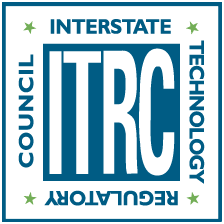Acknowledgments
The members of the Interstate Technology & Regulatory Council (ITRC) Remediation Management of Complex Sites (RMCS) Team wish to acknowledge the individuals, organizations, and agencies that contributed to this technical and regulatory guidance document.
As part of the broader ITRC effort, the RMCS effort is funded primarily by the United States (U.S.) Department of Energy with additional funding and support provided by the U.S. Department of Defense.
The Team was led by two state regulatory representatives: Carl Spreng of the Colorado Department of Public Health and Environment and John Price III of the Washington Department of Ecology. Team Leaders were assisted by Program Advisor Rula Deeb, and her colleagues at Geosyntec: Eric Suchomel and Elisabeth Hawley. Team leaders wish to sincerely recognize the efforts of chapter leaders Samuel L. Brock of the U.S. Air Force Civil Engineer Center, Sara Michael of California Department of Toxic Substances Control, Chuck Newell of GSI Environmental, Inc., Mark Rothas of the U.S. Army Corps of Engineers, Roy Thun of GHD, Michael J. Truex of the Pacific Northwest National Laboratory, and Janet Waldron of the Massachusetts Department of Environmental Protection. The team would also like to thank approximately 400 team members who participated in developing the document. These included state regulatory representatives, stakeholders, Federal agency representatives, and industry and consulting participants. A full list of individuals is provided in Appendix C. Their contributions were invaluable to the completion of this document. Those contributions included leading smaller teams of volunteers in preparing each chapter of the document, writing and editing sections of the document, contributing and editing case studies, providing multiple rounds of review comments, participating in 2-day team meetings and participating in monthly team conference calls. The Team would also like to thank ITRC’s technical editor Sidney Huffman and web layout/graphic designer John Sours who contributed to the final content and format of the document.


